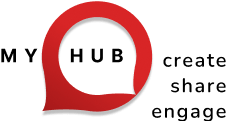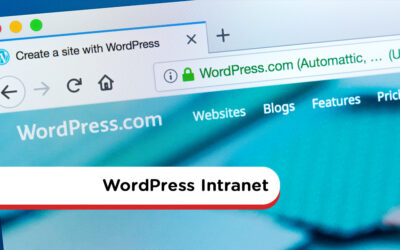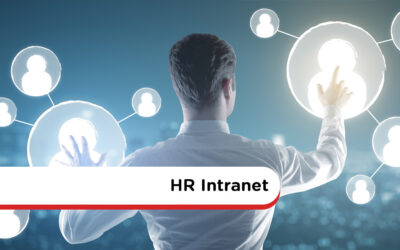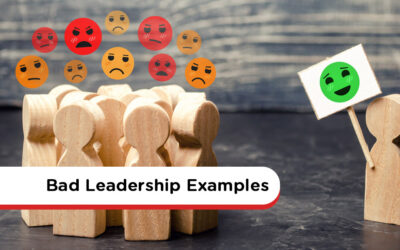Intranet Design Services
Choose from the self-build option with our support or work with one of our designers who will create a customized, fully-functioning intranet for your business, in 40 days or less, guaranteed!
The Challenge: Lack Of Time
You’ve defined your requirements and you know MyHub can deliver the outcomes you’re looking for. But do you lack the time and resources to customize your MyHub intranet site and get it launched on time?
The Solution: We Do It For You
By engaging with one of our designers, we’ll remove all of the complexity and risk by doing it all for you.
Planning For Success
Your MyHub intranet designer will lead the engagement process and ensure you’re updated on progress. The process is broken down into three key stages including:

Scope & Commercials
- Gathering requirements
- Defining launch objectives and timelines
- Developing a site plan including key pages, modules and content
- Agreeing the scope of works, pricing and terms.

Site Design
- Adding a company logo and changing site color options
- Designing and adding pages
- Adding content to pages including images, news articles, text, video and forms
- Adding folders and files to the Document Exchange
- Adding users to the site, Role Groups and Roles

Launch
- Handover and training
- Post-launch support
- Free site audit at any time
MyHub Designers, Delivering Great Outcomes
Intranet Design Articles
WordPress Intranet: 7 Of The Biggest Challenges
WordPress can be used as a company intranet—either hosted locally or online—with themes like Woffice and plugins for access control, knowledge bases, social interaction, and project management. Yet, although it’s widely used (43 %+ of web platforms run on WordPress), it wasn’t designed as an intranet, and adapting it for internal use brings unique challenges .
One core challenge is deciding between building vs buying: a DIY WordPress intranet demands technical know-how, server space, and ongoing maintenance, while off-the-shelf plugins/themes may deliver limited capabilities and may become obsolete . You’ll also need a carefully chosen combination of intranet plugins—BuddyPress, knowledge base tools, project managers, Google Drive embedders, access restrictions—and a theme that supports intranet design.
Finally, usability and support significantly affect adoption. While WordPress offers “5-minute installs” and user-friendly basics, building an intranet adds complexity. Many users find it more taxing than expected, especially without IT expertise, and ultimately pivot to purpose-built platforms for ease and long-term scalability.
HR Intranet Portal: 10 Compelling Benefits For Human Resources
An HR intranet portal is a centralized digital workspace that places HR policies, forms, training, and news at employees’ fingertips—24/7, across any device. It’s built to empower staff with self-service options and reduce repetitive administrative tasks for HR teams, improving efficiency and accessibility for both in-office and remote workers
The platform’s strength lies in streamlined processes like leave management, appraisals, recruitment, and onboarding, all supported by automated routing and powerful search. This not only saves time but also ensures consistency and compliance in documentation. Rich two-way communication tools—such as blogs, forums, instant messaging, and surveys—cultivate a connected, inclusive culture regardless of where teams are based
Engagement is further boosted through social features, recognition tools, directories, and wellness resources. HR portals help build relationships, reinforce employer branding, and track engagement metrics through quizzes, feedback, and exit surveys. Plus, they eliminate login fatigue by integrating third-party apps (like Microsoft 365, Salesforce) via single sign-on under one digital roof .
Employee Directory Software: The Intranet Solution
The blog highlights that while standalone employee directory tools are prevalent, an intranet solution—like MyHub—offers a superior, all-in-one experience. Beyond basic contact lists, an integrated directory features rich profiles, photos, biographies, expertise tags, and project highlights. This makes discovering and connecting with colleagues intuitive and engaging.
A modern integrated directory fosters better working relationships and employee engagement by breaking down organizational silos. Customizable profiles empower employees to showcase skills and contributions, making interdepartmental collaboration smoother. It also humanizes teams, easing onboarding and reducing communication friction—no more forgotten names or awkward intros.
Additionally, network-enabled directories help reinforce company culture. They give employees a sense of identity and belonging by illustrating how each individual fits into the larger mission. Easy-to-use features—such as self-updating profiles and straightforward search—ensure adoption remains high, keeping the directory current and relevant.
All About Remote Work: Definition, Benefits, Statistics
Remote work, defined as performing job duties from anywhere—home, café, or coworking space—has surged since the pandemic halted traditional office routines. From 2018 to 2021, full‑time remote workers more than quadrupled, and now hybrid and fully remote setups are the new norm. This trend reflects flexible work styles reshaping how teams operate.
Employees benefit from reduced commutes, lower stress, and greater autonomy, often reporting better work‑life balance, savings of ~$6,000/year, and renewed job satisfaction. Organizations gain cost savings—up to $22,000 per remote worker—and experience productivity boosts (up to +29%), improved retention, and access to a global talent pool. Environmentally, remote work cuts commuting emissions, supports sustainability goals, and reduces office energy use.
To succeed, both employees and leaders need the right tools (cloud storage, video conferencing, collaboration platforms), structured routines, and a dedicated workspace. Awareness of challenges—like communication gaps, motivation dips, mental health concerns, and technology hurdles—is crucial. Hybrid models (fixed, flexible, office‑first, remote‑first) offer balanced solutions, and expert opinions from Microsoft, Google, Meta, and CBRE signal that flexible work arrangements are here to stay.
Examples Of A Bad Leader: 10 Lousy Traits To Watch Out For
Bad leaders exhibit behaviors that severely impact team morale, productivity, and retention. Common examples include micromanagement, taking credit for others, inconsistent expectations, and authoritarian control. These traits signal mistrust, erode motivation, and stunt both individual and team growth .
Poor communication often accompanies bad leadership. This includes failing to listen, offering unclear instructions, shifting goals unpredictably, and ignoring staff feedback. Combined with a lack of empathy, dishonesty, and favoritism, such behaviors breed confusion, distrust, and resentment within teams .
Worse leadership styles—like toxic or authoritarian leadership—push employees into compliance through intimidation, unpredictability, or self-serving decisions. These styles suppress innovation, increase turnover, and risk long-term reputational damage. The article underscores the importance of accountability, empathy, transparency, and adaptability to reverse these effects and foster positive leadership cultures .
Employee Morale: The Ultimate Definition
Employee morale reflects the overall attitude, satisfaction, and outlook of your workforce—it’s the vibe people sense when walking into the office. High morale means employees are engaged, motivated, and aligned with company goals; low morale manifests in absenteeism, conflict, and burnout.
This guide explains why morale matters: it directly influences retention, performance, productivity, wellbeing, teamwork, and communication . Metrics such as turnover, absenteeism, performance dips, and staff feedback help identify morale issues early.
To counter poor morale, the blog offers ten practical tips: recognize achievements, support career growth, invest in wellbeing, enhance leadership communication, and foster two-way engagement . These steps—when combined—create a healthier, more productive workplace culture.







